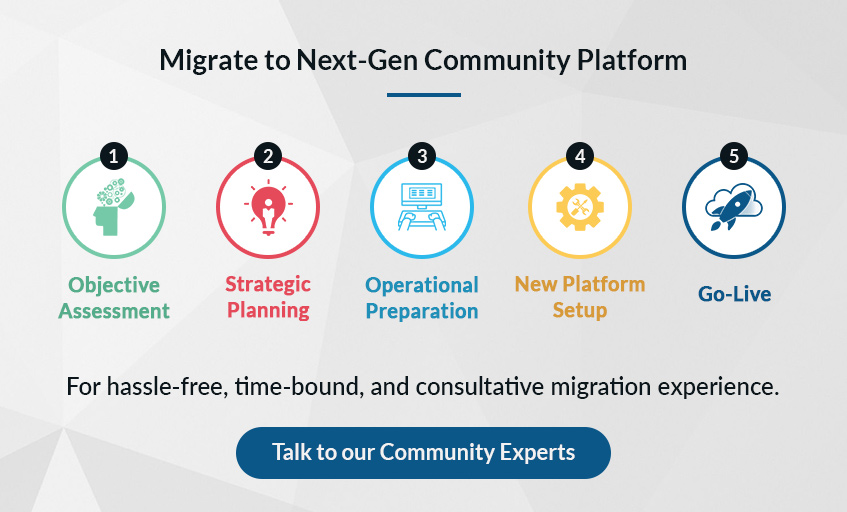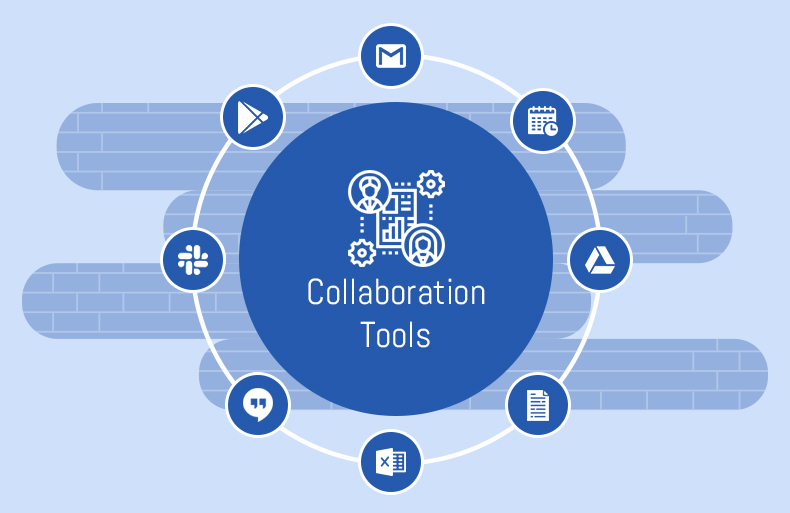Following the acquisition of Jive’s external community platform by Lithium Technologies, community managers—those running their external communities on the Jive platform (Jive-x, Jive 9 or older on-premises versions of Jive)—are in a muddle of questions.
If you are amongst them, we know what’s on top of your mind: Which platform should I opt for now? Well, you are not alone, there are hundreds more out there. The only difference is that some of them have already started the migration process while some are still exploring their options.
Let’s make your work a little easier. Based on our interaction with community managers, we have discovered that Salesforce Community Cloud and Lithium are among the most preferred platforms for community management. If your organization relies on the Salesforce ecosystem, you should go for Salesforce Community Cloud without a second thought.
Also Read: Top 5 Questions of a Jive-x Community Manager Planning to Migrate to Lithium.

Following are some of the things that you must consider if you are planning to migrate to Salesforce Community Cloud from your existing Jive-powered community:
1. Outline Your Objectives and Use Cases
You must start by outlining your objectives: What do you plan to achieve from your online community? Following is the list of some a few most common business objectives:
- Enhance awareness and improve public perception
- Collect analysis and customer feedback
- Educate existing and potential customers
- Drive acquisition
- Increase retention rate
Coming to the use cases, you must outline them based on the type of your company—whether it is a service-based or product-based organization—and what you want to promote using the community; events or products.
2. Do a Gap Analysis
One size doesn’t fit all and to deliver impeccable customer experience, certain features might be of great use. There are several features in Jive-x that you may need but may or may not be available in Salesforce Community Cloud.
For instance, Salesforce doesn’t provide blogging, social web connections, and advanced event capabilities. How would you get those important features, then? In case you found your much-used Jive-x features or functionalities missing in Salesforce Community Cloud, ask your migration partner or your Salesforce developer to get it custom built for you.
Well, to gain a better understanding of what is there in Salesforce and what is not, Our team of online community experts has compared the features and functionalities of Jive-x and Salesforce Community Cloud Lightning (including Lithium). Check out the comparison here.
3. Have a List of UI, Functionalities, and Integrations
Now comes an important part! Does your current Jive-powered community has a number of pre-integrated solutions like LMS, SharePoint, and Marketo? Does Salesforce support all these integrations? Are these integrations Lightning-ready? Puzzled again?
Without creating any further confusion, let’s tell you that Salesforce comes with bundles of packages (apps). Some are free but others can cost a significant amount.You can avail the packages from AppExchange. This is one of the major advantages you will enjoy after migrating to Salesforce.
And for that, you will need a right Salesforce partner. A partner with expertise in integrating solutions and ready-to-deploy connectors lowers the risk and time involved in launching your Salesforce-powered community. Also, the Salesforce-powered communities offer a variety of out-of-the-box functionalities, apart from the basic ones.
4. Migration Timeframe
A precise estimate of the timeframe requires a thorough understanding of the Jive-x version in use, integrations in place, extent of UI/UX changes, customizations, and other updates you may want to include in your migration plan.
An implementation partner with sound knowledge of technology stack of both the platforms can help you drastically reduce the cycle time of migration. Also, you will get best-in-class customizable UI templates, pre-built connectors for integrations, access to dev documentation, and credibility among the Salesforce platform users.
5. Migration Budget Optimization
One of the critical aspects to the success of your migration project is budget. You must understand the cost of licensing. For detailed information on pricing, get in touch with Salesforce executives because it will depend on your community size, scope, and requirements.
The migration will need services and that is also something you need to carefully plan for. You must conduct an assessment of the migration effort including custom integrations, design, and development.
But why should you opt Salesforce Community Cloud and what all it has got to offer?
Firstly, for all the new users of Salesforce Community Cloud, there are three options that you can select depending on your target audience.
- Customer community
- Partner community
- Employee apps & community.
For a detailed analysis of each package, click here.
Salesforce offers Community Cloud in both Visualforce and Lightning. Considering organization’s strategy to promote Lightning, we recommend you to go for it.
Then we come to the checklist part. You might have prepared a checklist of what you shall consider and what you need. But here’s our checklist of what all should be there on your list. Just match it before you proceed. Read here.
It’s for sure that you are ready with your checklist now. But what’s next? Well, now you begin your hunt for the right Salesforce migration partner. If you are wondering what you should look for in a migration partner, Click here to know…
Need help migrating your Jive-powered community to Salesforce Community Cloud? Our experts are ready to help you. Contact us.




